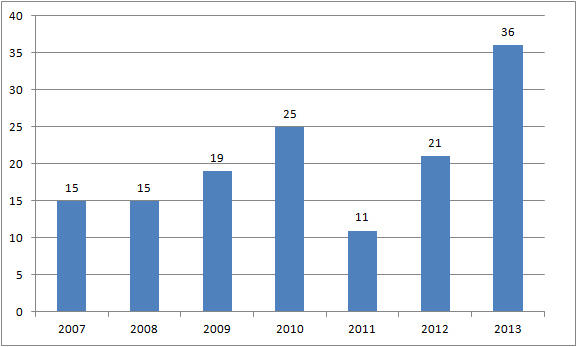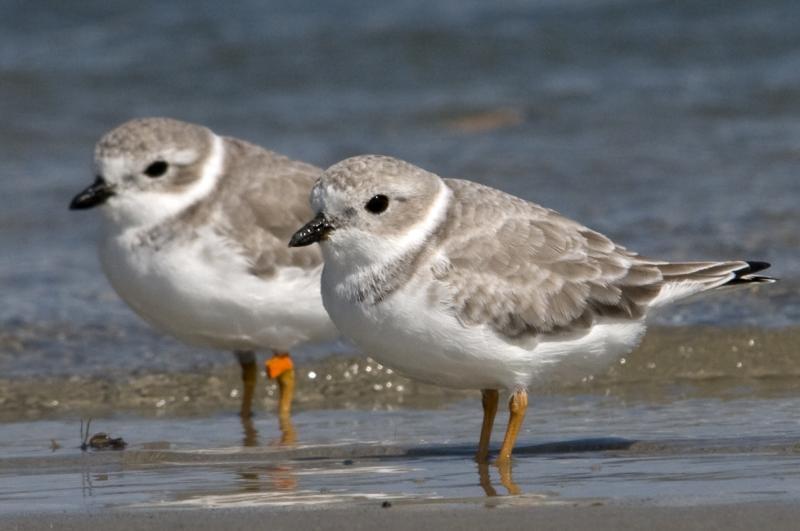2013 has turned out to be a banner year for Piping Plovers at Rich Inlet. The previous six years' peak fall counts of Piping Plovers averaged just under 18 birds, but in 2013 we counted 36 Piping Plovers at one time, and we found around 30 Piping Plovers using the inlet shoals and the north end of Figure 8 Island from mid-September into early October.
Peak counts of Piping Plovers during fall migration at Rich Inlet from 2007 to 2013.
While 30 birds may not sound like a lot, in a global populations of only about 8,000, such flocks are significant. Additionally, during migration Piping Plovers are arriving at and departing from stopover sites every week. Therefore, depending on turnover rates, the actual number of individual Piping Plovers could actually be much higher.
Roosting Piping Plovers. By Lindsay Addison.
We come by this information by doing weekly shorebird surveys at four southeast North Carolina inlets: New Topsail, Rich, Mason, and Masonboro. Biological technician Tara McIver visits the inlets every week and surveys the entire inlet system, counting all species she sees. Audubon North Carolina staff have been collecting this data since 2007. While it's easy to visit these areas and notice that birds are present, the surveys quantify numbers and species, providing data that can be used to asses the inlets' significance to shorebirds and defend important inlets from threats such as hardened structures like T-groins and jetties.
Therefore, we know that besides a count of 44 Piping Plovers at New Topsail Inlet in 2009, the 36 Piping Plovers Tara found roosting on the north end of Figure 8 Island is the largest group using an inlet in the past several years. The jump in numbers may be due to the high quality habitat Rich Inlet provides.There are several low-energy flats that are submerged at high tide and exposed at low tide: Green Shoal on the north side of the inlet and a large shoal on the sound side of Figure 8 Island. These are the plovers' favored feeding grounds. During high tide when it's time to roost, the plovers have been using the large, elevated north end of Figure 8 Island. The north end of the island has been growing in the past year or so, and sea rocket and sea oats (types of beach vegetation) have even begun colonizing parts of it. This mosaic of habitats is why wintering and migrating Piping Plovers favor inlets. They provide all they need in one small area so the birds don't have to expend energy flying back and forth.This is especially useful for migrating birds that are stopping over to rest and refuel before their next long flight.
Now that winter has settled in, a smaller flock of six or seven Piping Plovers appears to be staying at Rich Inlet. The other plovers have long since departed for other wintering grounds in Florida or the Caribbean. However, thanks to the excellent habitat Rich Inlet provided this fall, they may have found their journeys a little easier.






